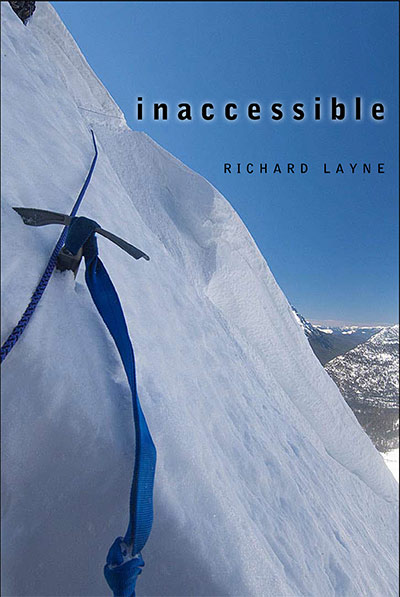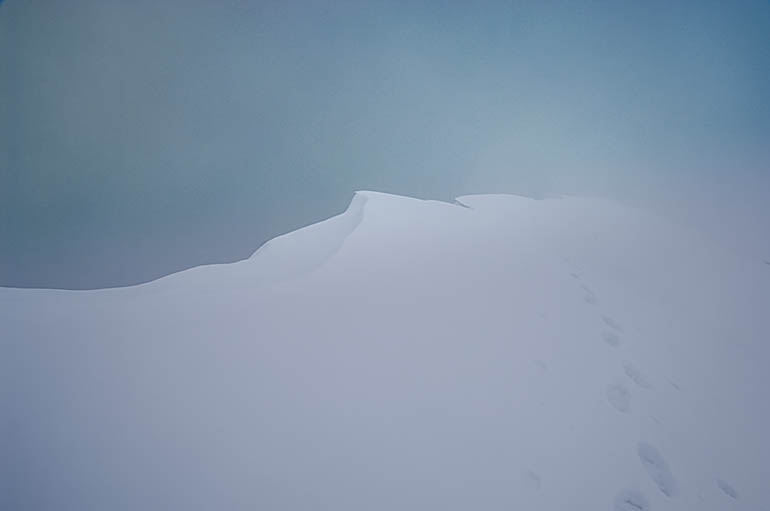
British Antarctic explorer, Robert Falcon Scott and the two remaining members of his five-man Terra Nova Expedition, officially the British Antarctic Expedition team perished on March 29, 1912. Low on food and fuel, and 11 miles from their next resupply, a blizzard arrived. They were so weak the last day they traveled they only covered a couple miles before they hunkered down to wait out the storm. The wind blew for a week before they finally succumbed inside their tent.
In a winter setting, to manufacture heat a person needs numerous items such as shelter, cold weather gear, and two major items, calories and movement. Because at the last moment Scott decided to bring a fifth man, the Expedition only had 4500 calories available for each man per day rather than the original 6000 calories. That eventually slowed the expedition, which simultaneously made them more susceptible to the cold and harsh conditions, which in turn slowed them further. At some point, they were unable to move fast enough to manufacture heat, making them vulnerable to frostbite, which slowed the team even more. It was the classic snowball effect . . . no pun intended.
Their experience was similar to some of my own, except I am still alive, although not because I am better than they were. Au contraire, the only group of expeditioners I have read about that might have been tougher than the Scott bunch was Lewis and Clark’s Corp of Discovery, who probably never experienced temperatures colder than brief spurts of 40 degrees below zero Fahrenheit. For the Scott Expedition below zero temperatures were the norm.
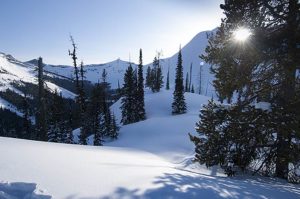
On March 23, 2008, my first day in Idaho after summiting Blodgett Pass, another storm would arrive before the day’s end. This was Day-6 of the first leg in my attempt at a 106-mile double winter crossing in Montana and Idaho’s Selway-Bitterroot Wilderness. Moreover, today I was supposed to have arrived at the winter-closed Elk Summit Guard Station, where I hoped my nine-day resupply waited. After two nights of below zero temperatures, and sleeping cold in my mummy sleeping bag, I still had 13 miles to travel before arriving at my cache. Only, it had just taken 5 days to complete less than 11 miles, and by the end of this day I would be digging into my 3-day emergency food stores.
In the heavily forested region of the Big Sand Creek canyon, I stopped for a breather near the end of my freshly built trail through the snow. The last time I had eaten anything was at least six hours earlier. Out came the 2/3 empty bags of raisins, prunes and peanuts. Weak and tired, I desperately needed nourishment. Shaking, I fumbled the bag of peanuts, and then dropped it into the snow at my snowshoed feet. Some of the precious contents spilled into the partly stomped snow.
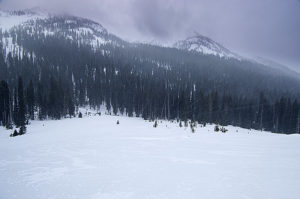
Even in the pristine woods, I have a zero tolerance rule. Whatever lands on the ground stays on the ground. Not this time. By the sixth day of the trip, I finally realized that I was slowly starving to death. My backpack’s heavily padded waist belt, already cinched as tight as it could go, remained so loose that the pack was dropping off my hips and onto my shoulders. After a few moments of indecision, I stuck my fingers into the snowpack, retrieved and then ate the combination of peanuts and snow. The spilled contents totaled approximately 100 calories. However, I knew I needed everything I could eat, with nothing wasted.
For the next three nights before I arrived at Elk Summit, the temperature dropped below zero for two of them, and I was cold in my sleeping bag. After consuming approximately 3000 calories my first evening with the resupply, in spite of the raging storm that lasted until the middle of the following day, I slept warm and soundly through the night. Besides the continuing storm stopping me the next day, greatly weakened, I was in no condition to travel. I rested and kept eating for one day before continuing the trip. I also slept warm the second night at that camp, although once again the temperature was below zero.
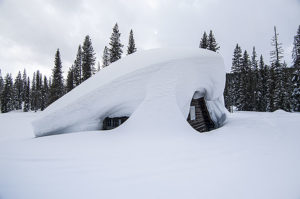
Like the Terra Nova Expedition, I had an underwhelming amount of calories for the task. My plan had been to travel the 25 miles to Elk Summit in six days. A few days before the trip began; a storm had dropped about one foot of powder snow on an already deep snowpack. I would endure two storms during the nine-day period, and then one at Elk Summit, and yet a fourth storm 48 hours later. As a result, there was no alternative but to build trail for 5.5 days before hefting my load of 80-95 pounds and carrying it to the end of each built segment. Through those 5 days, I averaged 1.7 miles of forward progress per day although I walked 5.1 miles. I had planned on four miles of forward progress per day. In short, during the first 9 days of the trip, I traveled an extra 18.7 miles getting only half of the calories that I needed. While I survived the mistake, would I learn from it?
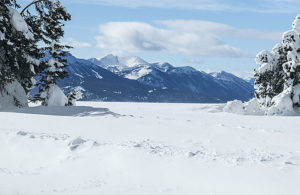
Near the beginning of this winter’s travel on the Continental Divide, 48 miles is in the Centennial Mountains, 22 miles west of Yellowstone National Park. If the route is all powder snow, which I anticipate will be the case; my supplies dictate that my daily forward progress must be at least 2.09 miles. That is a greater average then when I was building trail during the first leg in Selway-Bitterroot Wilderness in 2008. There are some vital differences though. I am carrying an additional 2625 calories for each day, coupled with a load that is 15-30 pounds lighter.
The proper daily minimum amount is 6000 calories. Based on experience, in heavy powder conditions, I can anticipate my forward progress to be .33 miles per hour. Unfortunately, in a strong ascent, and there will be eight of them in the Centennial Mountains, I can consume 1000 calories per hour. Excluding the ascents, at 600 calories consumed per hour, I have enough food available to travel 7.5 hours per day, assuming I am physically fit. In addition, there are 1500 calories for my 18-hour camps. Since no one has ever traveled this route during the winter, only my upcoming experience will reveal whether I brought enough food.
Reading this, one may question why I failed to place more food on the route. Weight. In extreme winter conditions, there is a balance between how much I can carry and ideal calorie allowances. I suspect Scott decided on an extra man at the last moment because of the weight of the gear and food. Since I am traveling alone, there is no sharing the camp gear’s weight, or getting assistance building a trail through deep powder.
If four persons were traveling this route, consuming the same amount of calories as I, using the leapfrog method, they would be able to travel between 7 and 10 miles per day, all forward progress. Moreover, they would be less tired at the end of the day. That is important since winter is far less forgiving about mistakes or shoddy work. There can be no shortcuts when building a winter camp, which takes at least double the time of any other season.
Other factors will challenge the trip, such as blizzards (days of no travel), extreme cold, busted equipment, and missing resupplies. My biggest question remains to be whether I will have enough food and fuel for each leg of the 270-343 miles of travel.
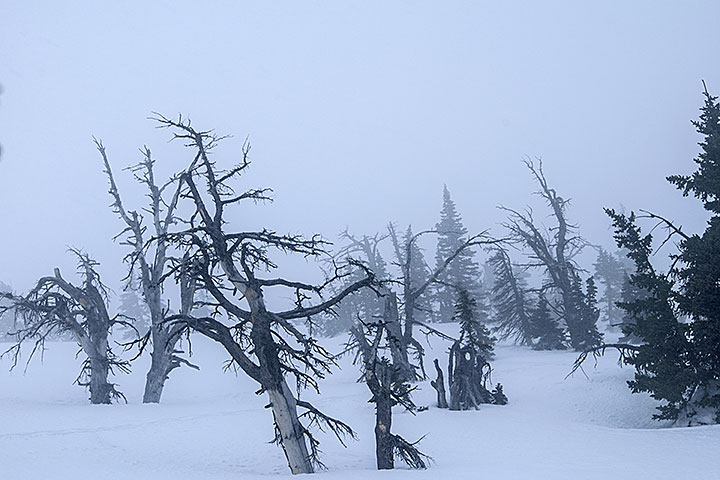
Note: because a strap broke on one of my snowshoes during the winter of 2008, seeking a replacement I briefly exited the trip 20 miles north of Elk Summit. My wife picked me up and we spent the first night in a nearby motel. In our room when I removed my shirt, she gasped and said I looked like a concentration camp victim. Apparently, for a short-lived period in 2008 I was very skinny.
Note two: after the Selway-Bitterroot trip was successfully completed, I reworked out the calorie numbers. I was shocked to discover that instead of approximately 5000, I only had 3375 calories available per day.

